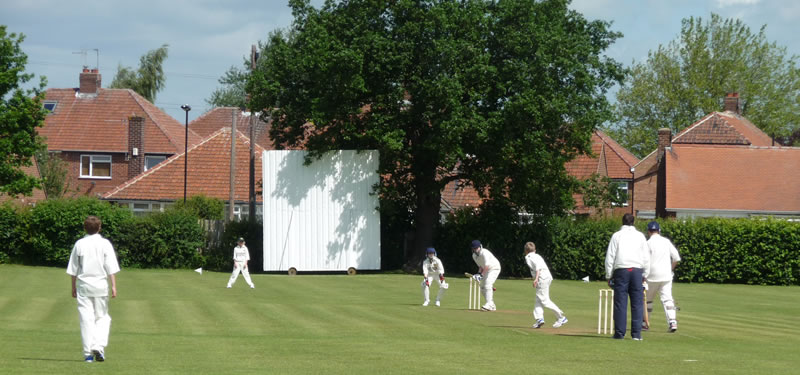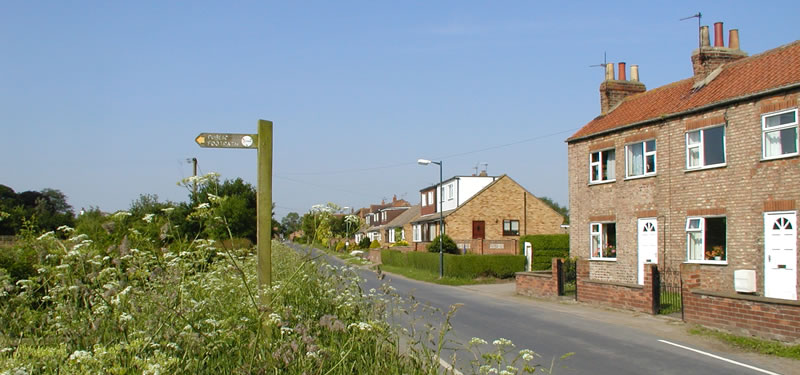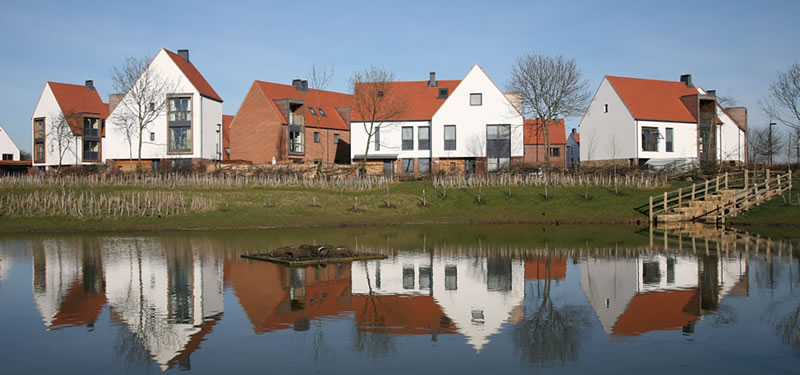The villages of Osbaldwick and Derwenthorpe are situated adjacent to each other on the south east edge of the City of York. Murton is located approximately 1.5 miles further away just outside the A64 ring road.
The Village of Osbaldwick
Dating from the 5/6th centuries, the old village of Osbaldwick was a rural community right through to the mid 1900s when it grew into the suburban village that it remains today.
In the 19th century Osbaldwick was a centre for growing flax which provided cattle food and linen. The village also hosted two private asylums, one for men and the other for women. Following the example of The Retreat in York, these treated their patients in a kindly and humane way and received good reports from the Metropolitan Commissioners. In 1927 York City Council bought land in the parish to build council housing and to store cattle from Ireland. The cattle were driven on the hoof to the Thursday market in the centre of York. As late as the early 1960s villagers were warned to close their gates on market day to prevent strays getting into their gardens.

A large community Hall was built after the First World War between Osbaldwick and Murton to commemorate those killed in the war. For many years it was an important focus for the social life of the community with a flourishing tennis club. It closed in 1939 and was for many years the headquarters of Anelays, the nationally known builders and restoration experts.
The village school used to be in the building opposite the church on Murton Way. When numbers increased in the 1960s, classes were held in the old Methodist chapel as well and finally a new school was built off Osbaldwick Lane. The old school was then used as a church social centre and is now a private nursery, and the old chapel is now the Village Hall currently used by another private nursery.
The 1950s and the first half of the 1960s saw an enormous expansion. New small shops, including two butchers, a post office and a chemist appeared and Osbaldwick became a dormitory suburb to York. Today many of the small shops and the post office have gone, however, with a frequent bus service and Sustrans cycle track to the city centre, as well as its proximity to the University, Osbaldwick remains a most popular place to live.
The centre of the old village round the village green is now a conservation area and presents a well loved picture with echoes of Osbaldwick’s rural origins.
The Village of Murton
There has been a settlement in Murton since at least the 11th century, with “Mortun”, the town on the moor, listed in the Domesday Book of 1086.
Because of its proximity to York, Murton was probably a source of food supply for the city, and by the 18th century, tenants of the land were market gardening. From about the 1840s Murton and nearby Dunnington became a major centre for the growing of chicory, which was roasted in local kilns and used for the adulteration of coffee. At one stage over 1000 acres were being cultivated annually but the trade declined in the late nineteenth century, following changes in taxation and competing imports from Belgium.

By early the next century, racehorses were being trained in the village. The winner of the 1832 Derby, St Giles, was a Murton trained horse, although there was some suspicion that the horse had been fraudulently entered for the race with a wrong age.
Early in the 20th century the village was still a centre for market gardening. Fruit, particularly strawberries, and vegetables were supplied to York and dairy farms provided milk. There are still three working farms in the village and other land is farmed by farmers from neighbouring parishes. Other agricultural related activity includes an animal feed mill and associated farm stores, a busy livestock centre, an abattoir, and a farming museum. There are various small businesses within the parish, but the majority of local people commute to York and elsewhere.
Although close to York, Murton remains a small village protected by surrounding Green Belt land and by the Conservation Area status of the old village.
The Village of Derwenthorpe
Derwenthorpe is a new urban extension of 540 homes adjacent to the village of Osbaldwick and also bounded by Tang Hall and Meadlands.
Derwenthorpe was inspired by the New Earswick community in York, developed by Joseph Rowntree for workers within York 100 years earlier. The Joseph Rowntree Housing Trust (JRHT) wanted to create a new community, a century on, that was both socially and environmentally sustainable. There was an explicit aim to develop an urban extension that could be replicated by volume house builders to scale, rather than being a niche part of the housing market.

Derwenthorpe is a mixed development with 59% of homes being for private sale, 26% for social rent and 15% reserved for shared ownership. It consists of four phases, each phase linked by footpaths and a Sustrans cycle way but with no through-traffic.
